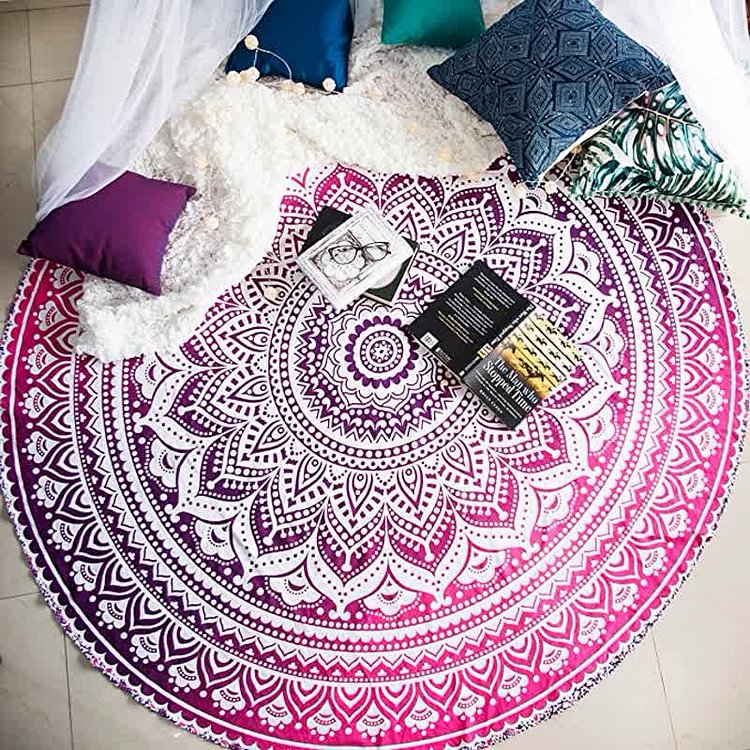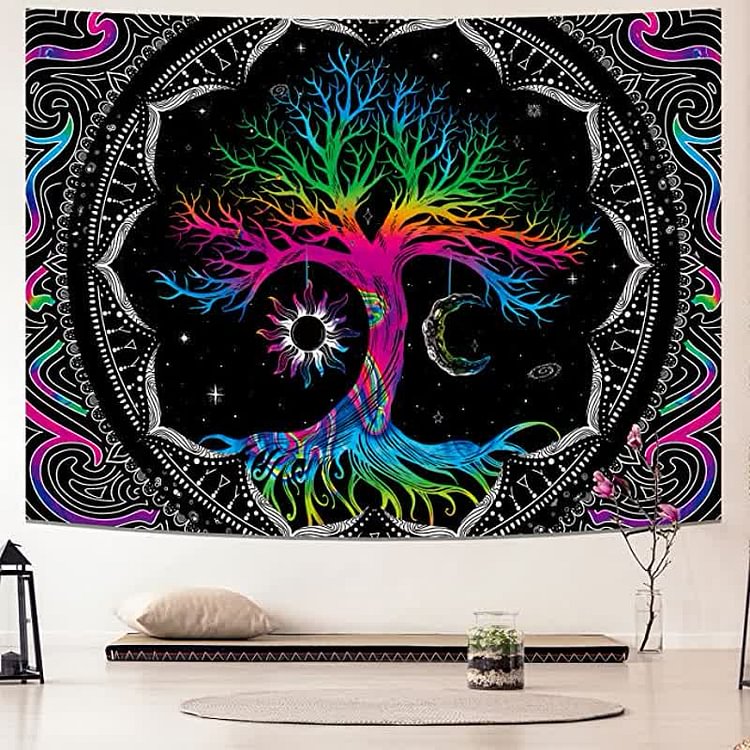Understanding the Symbolism and Colors of Chakra Yoga Tapestry
May 05, 2023
Introduction
Chakra yoga tapestries have gained popularity as an effective way to enrich yoga and meditation practices. These tapestries showcase the seven chakras, or energy centers within the body, and aim to harmonize and align them for holistic well-being. By understanding the symbolism and colors behind chakra yoga tapestries, you can foster a more profound appreciation for the practice and elevate your experience.
Symbolism and Colors of the Chakras
Each chakra is linked to a distinct color, symbol, and aspect of human consciousness. Chakra yoga tapestries display these associations, allowing you to concentrate on and connect with each energy center. Here's an overview of the symbolism and colors of the chakras:
-
Root Chakra (Muladhara)
The root chakra, also known as Muladhara in Sanskrit, is located at the base of the spine and is associated with the color red. This energy center is believed to represent our foundational relationship with the physical world, providing us with a sense of stability, grounding, and security. Its symbolic representation as a lotus flower or a coiled serpent suggests the potential for growth and transformation that can be achieved through a healthy relationship with our physical environment.
-
Sacral Chakra (Svadhisthana)
Moving up the chakra system, we come to the sacral chakra, known as Svadhisthana in Sanskrit, which is located just below the navel and is associated with the color orange. This energy center is believed to represent our emotional and creative expressions, as well as our ability to experience pleasure and sensuality. Its symbolic representation as a six-petaled lotus flower or a crescent moon suggests the potential for growth and transformation that can be achieved through the cultivation of our innermost desires and passions.
-
Solar Plexus Chakra (Manipura)
Now, we come to the solar plexus chakra, known as Manipura in Sanskrit, which is located above the navel and is associated with the color yellow. This energy center is believed to represent our sense of personal power, self-confidence, and willpower. Its symbolic representation as a ten-petaled lotus flower or a triangle suggests the potential for growth and transformation that can be achieved through the cultivation of a strong sense of self and a clear sense of purpose.
-
Heart Chakra (Anahata)
Located in the center of the chest, the heart chakra is connected to the color green. It embodies love, compassion, and emotional balance and is often depicted as a twelve-petaled lotus flower or two intersecting triangles.
-
Throat Chakra (Vishuddha)
The throat chakra, situated in the throat, is represented by the color blue. It conveys communication, self-expression, and creativity and is frequently portrayed as a sixteen-petaled lotus flower or a crescent moon.
-
Third Eye Chakra (Ajna)
Positioned between the eyebrows, the third eye chakra is associated with the color indigo. It symbolizes intuition, wisdom, and inner vision and is typically illustrated as a two-petaled lotus flower or an eye.
-
Crown Chakra (Sahasrara)
Located at the top of the head, the crown chakra is connected to the colors purple and white. It represents spiritual enlightenment, unity, and oneness and is often depicted as a thousand-petaled lotus flower or a circle.
The Impact of Chakra Yoga Tapestries on Your Practice
Understanding the symbolism and colors of chakra yoga tapestries can enhance your comprehension of the practice and sharpen your focus on each chakra. By fostering balance and alignment throughout the body, these tapestries can enrich your yoga and meditation experiences, resulting in physical, emotional, and spiritual well-being.

















